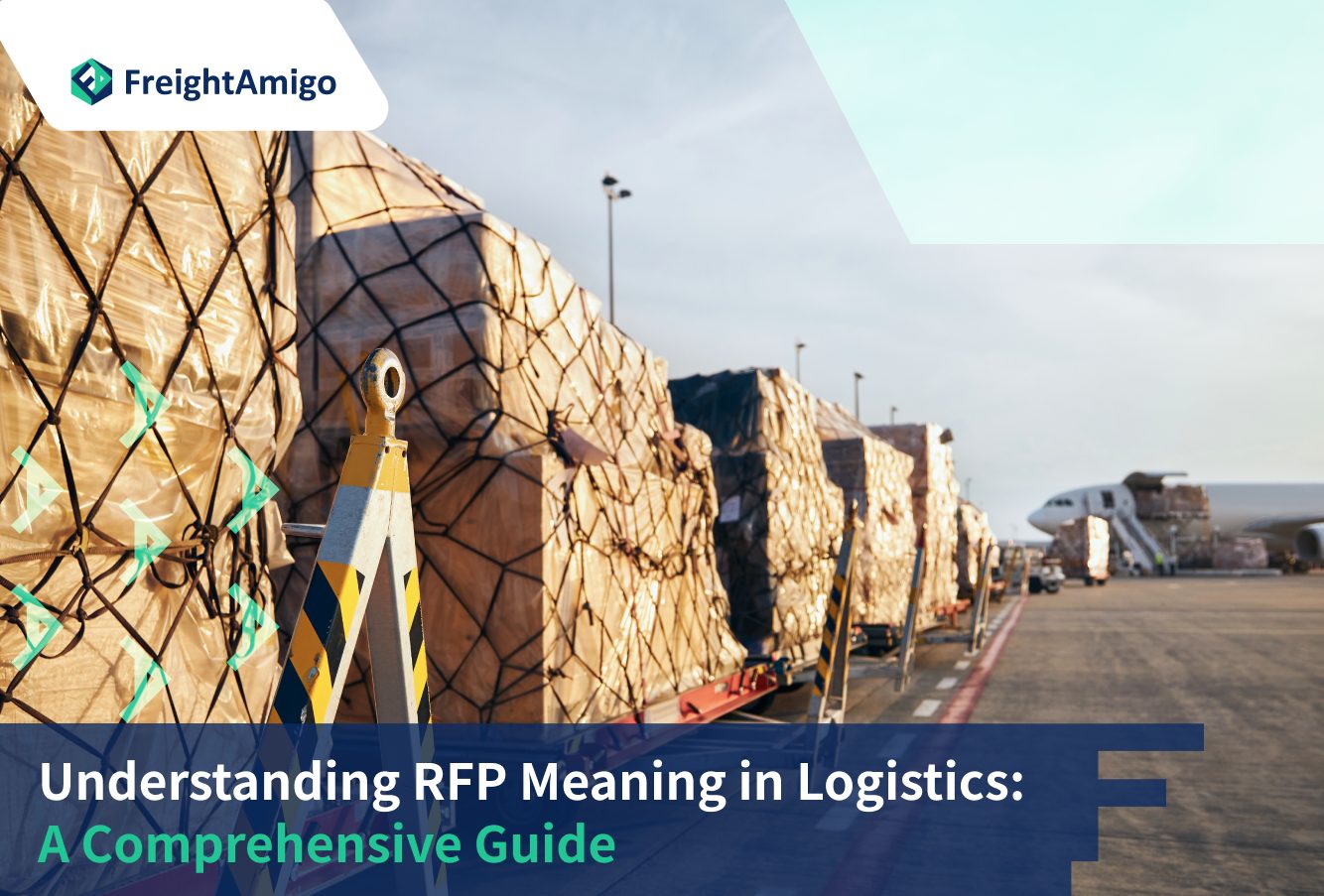Author Name: Tiffany Lee – Marketing Analyst at FreightAmigo
Understanding the RFP meaning in logistics is critical for businesses looking to streamline their transportation and supply chain operations. A Request for Proposal (RFP) is essentially a document employed to solicit bids from prospective transportation companies for upcoming projects or lanes, serving as a foundational tool in the procurement process to secure contracts with logistics providers and freight carriers. It outlines the company’s requirements for a certain service and includes crucial information about the business, ensuring a match with a third-party logistics (3PL) provider that can meet the specified needs most effectively.
The importance of RFPs in logistics cannot be overstated, as they provide a structured mechanism for businesses to request, evaluate, and select the best possible service offerings. By setting clear requirements, specifications, and expectations within the RFP, companies can engage in competitive bidding, effectively control costs, and foster potential future partnerships with vendors. The process includes several critical stages, from determining business needs and choosing evaluation criteria to creating and sending the RFP document, and finally, evaluating submissions and signing contracts. This comprehensive approach allows for an organized method to find reliable 3PL providers, aligning with a company’s specific logistical needs and operational goals.
Want To Compare The Best Express, Air Freight, Sea Freight, Rail Freight & Trucking Rates So As To Have Better Control On Cost?
Understanding the Basics of a Logistics RFP
RFP Definition and Purpose in Logistics
An RFP, or Request for Proposal, is a formal document used in the logistics sector to outline the requirements for partnering with businesses, especially in transportation and logistics services. This document is crucial for shippers to identify and select the most suitable Third Party Logistics (3PL) providers that can meet their specific needs.
The RFP Process
- Initial Preparation: Begin with extensive market research to understand current conditions and gather detailed data. This phase includes a clear statement of the business needs.
- Setting Objectives: Clearly outline the goals and objectives of the RFP, which could range from finding cost-effective transportation solutions to meeting strict regulatory requirements.
- Criteria Development: Develop criteria for evaluating proposals which will help in selecting the right provider that meets the business’s logistics needs.
- Drafting and Publishing: Draft the RFP document to include an introduction, scope of work, proposal format, and submission guidelines. The RFP is then published to invite potential providers.
Key Elements of a Logistics RFP
- Introduction and Background: Provide a basic background of your company and the logistics problem that needs resolution.
- Scope of Work: Detail the logistics requirements including the type of goods, transportation lanes, shipment frequencies, and other specific logistics needs.
- Proposal Requirements: Specify the format and structure of the proposal submissions to standardize responses for easier comparison.
- Evaluation Criteria: Outline how the proposals will be evaluated. This includes cost comparison, service capabilities, and provider stability.
Standardizing Proposal Evaluations
To ensure fair and effective comparison of proposals, it is advisable to share a standardized rate template with the RFP document. This approach facilitates easy comparison of costs at the line item level, helping businesses evaluate proposals based on consistent financial metrics.
Benefits and Challenges
The use of RFPs in logistics offers multiple advantages such as reaching multiple suppliers, controlling costs, and fostering competitive bidding which can lead to more cost-effective and innovative solutions. However, a common challenge is that RFPs might not encourage providers to suggest alternative solutions, focusing instead only on the specified requirements.
By understanding these basics, businesses can effectively utilize RFPs to enhance their logistics operations, ensuring they partner with the best providers that offer the right mix of cost efficiency and service quality.
The Role of Logistics RFP in Supply Chain Optimization
Ensuring Carrier Compatibility and Performance
Request for Proposals (RFPs) in logistics are instrumental in verifying that carriers meet specific business expectations. They facilitate the collection of detailed information about the qualifications, capabilities, and services offered by freight carriers. This is particularly crucial for standardized services or basic commodities, where price often serves as the primary consideration.
Selecting the Right 3PL Partners
A well-crafted RFP helps in identifying Third-Party Logistics (3PL) providers that not only understand the company’s goals but also propose solutions that optimize the entire supply chain. This strategic alignment is essential for enhancing operational efficiency and achieving long-term logistics objectives.
There Are Different Options For Cargo Transportation. If You Want To Choose The Most Convenient And Suitable Solution, It Is Best To Have The Full Support Of Logistics Experts! If You Are Planning To Ship Goods Overseas, Please Go To The FreightAmigo Page For Inquiries.
===
Read More:
【Cosmetic Product Recycling】 A Guide to Sustainable Reverse Logistics
【Rise of Green Supply Chain】 Pioneering Sustainable Practices in Logistics
【ESG in Logistics】 How ESG Practices Drive Social Responsibility in Logistics
===
If you have any inquiries on logistics/supply chain, feel free to contact FreightAmigo now:
Chat with us online OR
Phone : +852 28121686
WhatsApp: +852 27467829









































